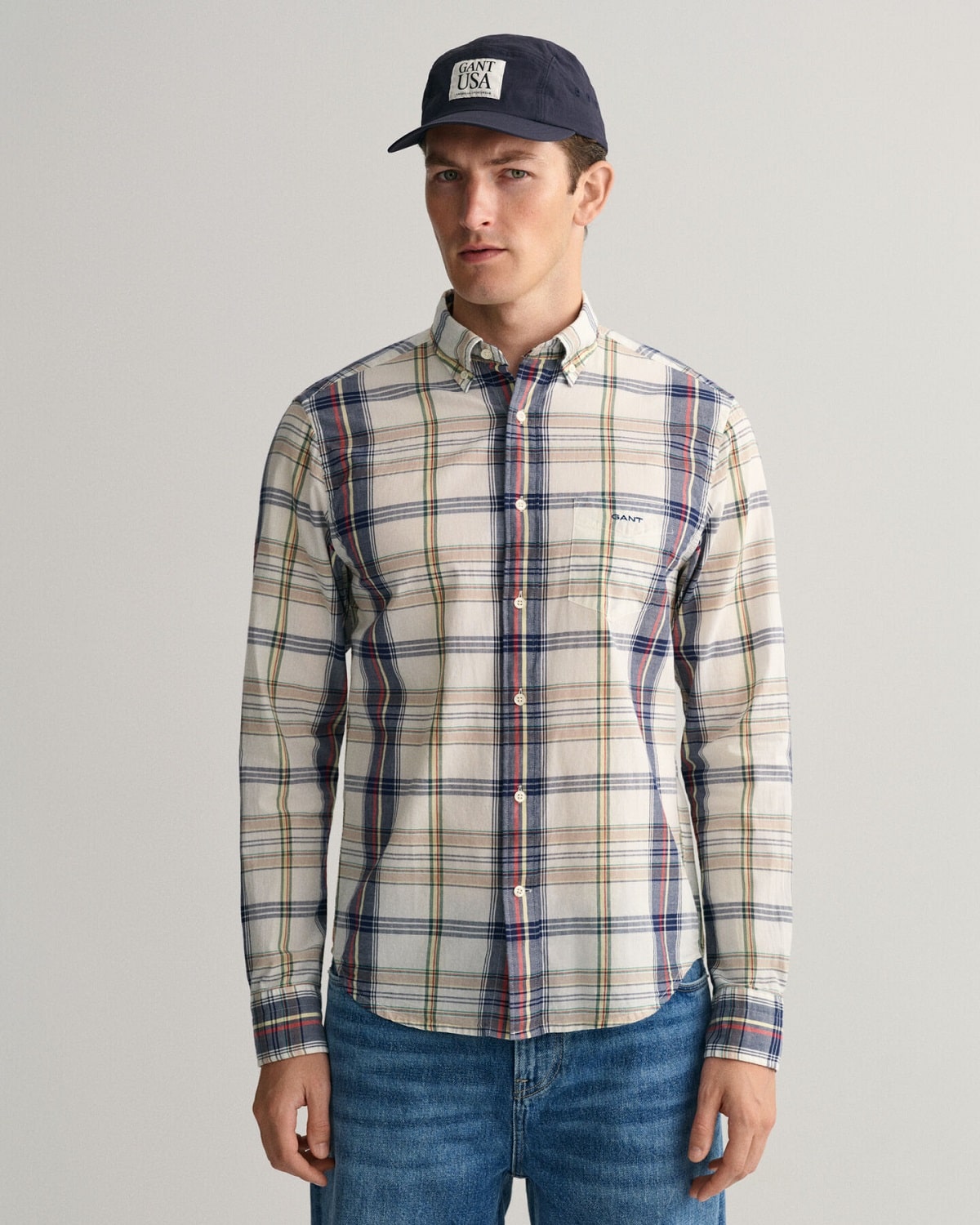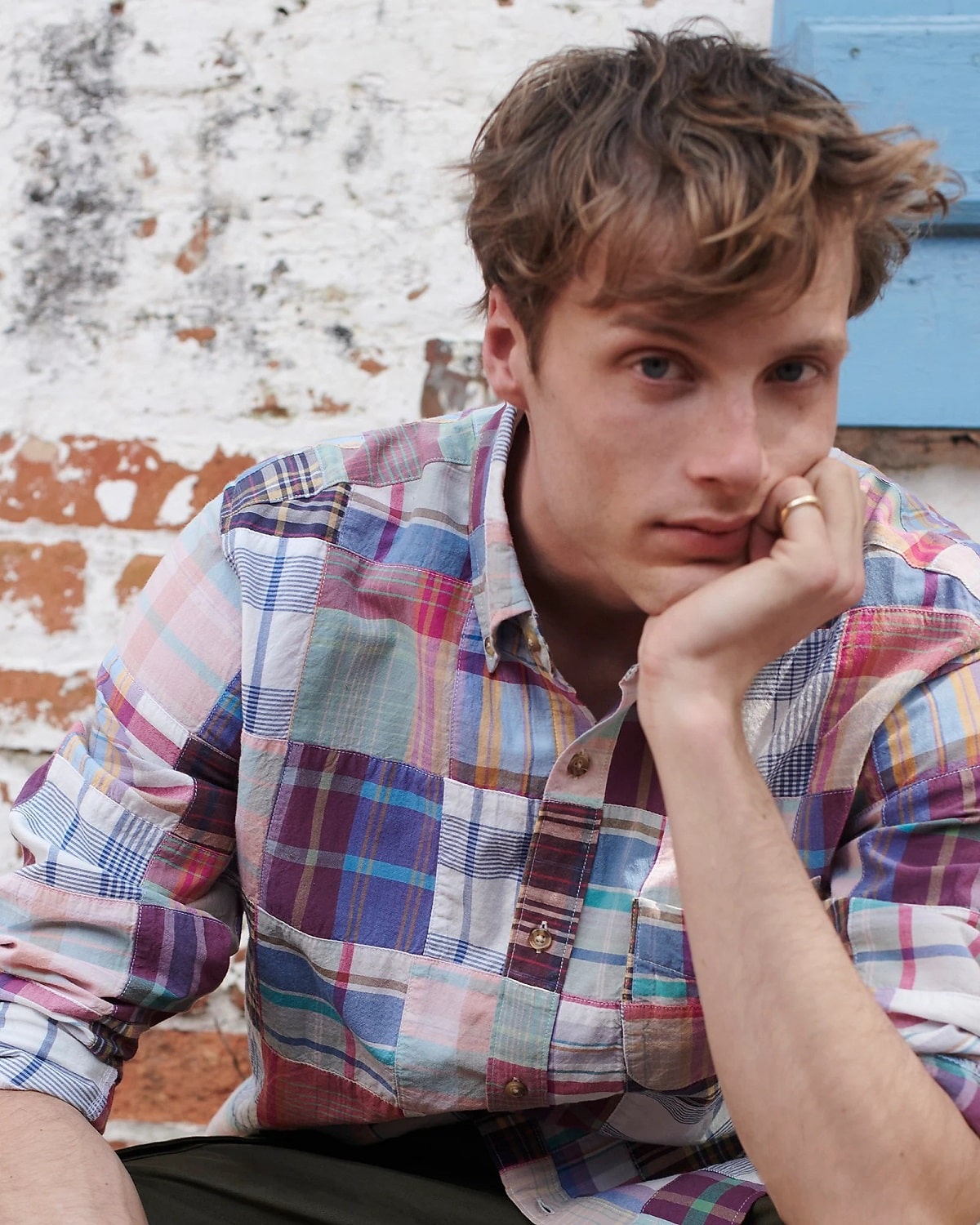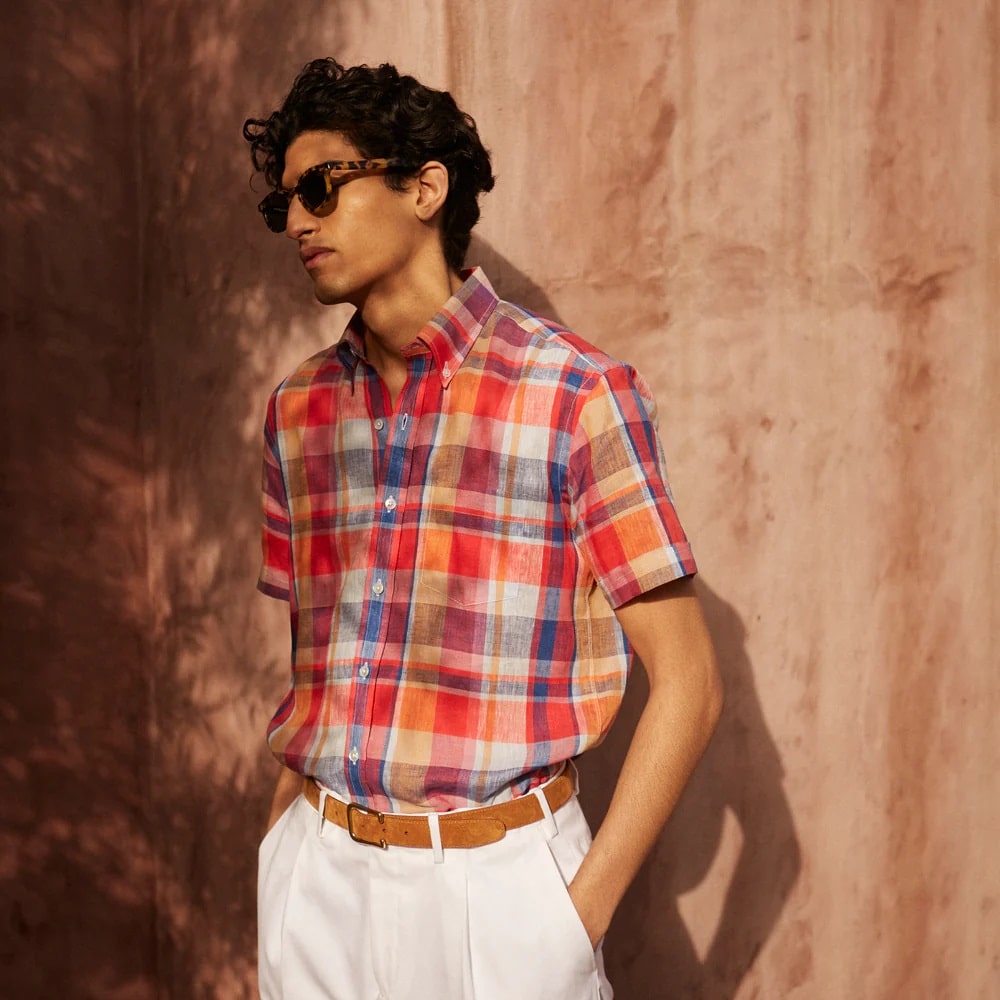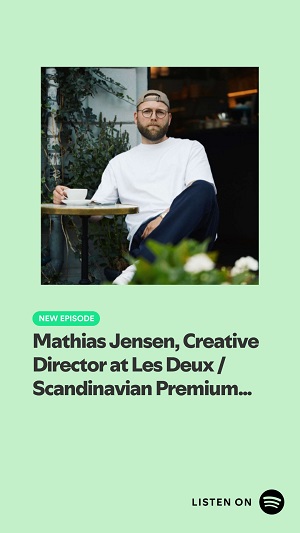1
HOME > Fashion History >
WHAT IS MADRAS FABRIC?
Written by Ivan Yaskey in Fashion History on the 18th July 2023

Polo shirts. Boat shoes. Madras. No matter the era or colour, these staples characterize a summertime preppy wardrobe. But, while polo shirts and boat shoes are fairly self-explanatory, Madras comes with a complicated, colonialist history, making it more than a warm-weather plaid.
Characteristics of Madras Fabric
Not to be confused with the curry powder of a similar name, Madras describes a lightweight cotton fabric that’s often hand-woven and features a bright multicoloured check pattern. Historically, vegetable and semi-permanent dyes contributed to this appearance – one, after a mistake with a large Brooks Brothers order in the 1950s, that often bleeds and fades. While the fabric gets used for a number of garments, you’ll spot it among men’s summer button-fronts, Bermuda-style shorts, and unlined cotton suits and sportscoats. Multiple techniques go into creating Madras. Going back to its origins in the modern-day Indian city of Chennai (formerly the outpost of Madras during British rule), the fabric was hand-loomed and yarn-dyed, resulting in an identical colour combination on both sides. Today, machines often create Madras, but the authentic material shrinks somewhat, has a light, uneven slubbed texture, and will fade and bleed with time. While original iterations featured fewer colours, fabrics since popularity surged in the mid-20th century incorporate a wider range of colours over a patchwork configuration.
In the present, you’ll come across three types of Madras configurations:
- Pre-dyed threads are woven into a single piece of fabric. This method is the most traditional.
- The fabric gets woven and then dyed – either using natural or synthetic colours.
- Perhaps the least authentic, individual cotton patches are woven and then stitched together, resulting in a lightweight, asymmetrical patchwork fabric.

The History of Madras
Western consumers received three introductions to Madras – first through the British East India Company, later through the burgeoning Caribbean vacation industry in the early 20th century, and then through preppy fashions and the broader popularization of the fabric by Brooks Brothers, Ralph Lauren, Gant, and other brands catering toward a WASP-y, collegiate American consumer. The fabric’s history goes back to India, particularly the region of Madraspatnam. While British colonial rule brought the woven cotton fabric to a wider audience, these textiles go as far back as the 2nd century and were traded in the Middle East and North Africa during the 15th century. Europeans’ introduction to what’s now called Madras started with the Dutch, who established a presence in the region in the 17th century, and, not long after, the East India Company, through a colony known as Armagon, which traded spices and textiles.
Colonists searching for a better-quality cloth came across Madraspatnam, a coastal village with chintz-style textiles featuring a block print. The East India Company set up a second post here, along with Fort St. George, to grow its textile industry, including traditional cotton, a solid-coloured muslin, and the loosely handwoven cotton initially featuring embroidery. Rice gruel, vegetable dyes, and boiling water added the familiar, although somewhat basic, plaid pattern of reds and blues we now associate with Madras. Over the next couple of centuries, demand for Madras grew throughout the British Empire for its bright colours and construction ideal for staying cool in the heat. As another step toward the pattern to which we’re more accustomed today, King George IV visited Scotland in 1822, bringing back an interest in tartan plaids with him. In turn, these two aspects converged somewhat, resulting in a brighter, more contrast-heavy plaid print on Madras fabric. At the same time, the lightweight, breathable construction caught on in South Africa and other British African colonies before it spread to the Caribbean.

American Preppy Fashion
Up to this point, the progression and path taken by Madras across the British Empire explains its popularity as a warm-weather staple. Its role as a keystone of American preppy fashion overlaps with this narrative and takes its own tangent. As a vague initial introduction, the former Collegiate School in New Haven renamed itself as Yale University in honour of Elihu Yale, a governor of Madras in the 18th century who made a donation to the school. Along with a large amount of funds, this included Madras fabric. However, wider exposure came in the form of the Sears Roebuck & Company catalog, which started carrying summer-friendly Madras shirts in 1897. Perhaps as a confluence of these factors, those with the means to travel to British-owned areas of the Caribbean in the first few decades of the 20th century returned with Madras – at the time, a status symbol similar to the Hawaiian shirt. Over the next few decades, preppy brands like Brooks Brothers embraced the lightweight, colourful fabric. The fading factor, however, is attributed to an incident in 1958: At the time, Brooks Brothers purchased about 10,000 yards of the material, but was unaware the fabric, coloured with chemical azo dyes, would bleed after washing. Customers, predictably, were dissatisfied after running Madras through a washing machine. In conjunction with advertising firm Ogilvy, Brooks Brothers developed a campaign touting the fabric’s ability to fade – “Guaranteed to Bleed” became a well-known tagline at the time.

How to Wear Madras
Today, impressions of the woven plaid material vary based upon where in the world you are. While not quite a status symbol, Madras remains a staple of U.S. preppy dressing and those influenced by these upper-class, Ivy League styles. On Caribbean Island Martinique, the fabric is frequently used for school uniforms. In India, likely due to history, it’s considered a lowly, almost utilitarian fabric without much value. The reality is, whether you’re going for authentic or patchwork Madras material, the lightweight cotton fits the bill for a number of spring and summer garments – lightweight shirts, shorts, trousers, and suit jackets, as well as pocket squares. The broken-up rainbow of colours positions it as a statement material – one that pairs well with neutrals like khaki, navy, and white, as well as various muted solid-colour pastels. Today, the fabric offers an alternative yet similar feel as linen due to its breathability and light wrinkling. In turn, unless you’re striving for a direct preppy allusion complete with boat shoes, you’re advised to sport it as a casual to smart-casual summer fabric alongside other cotton-based garments.


Trending
2
3
4
5
6
7
8
9
10










